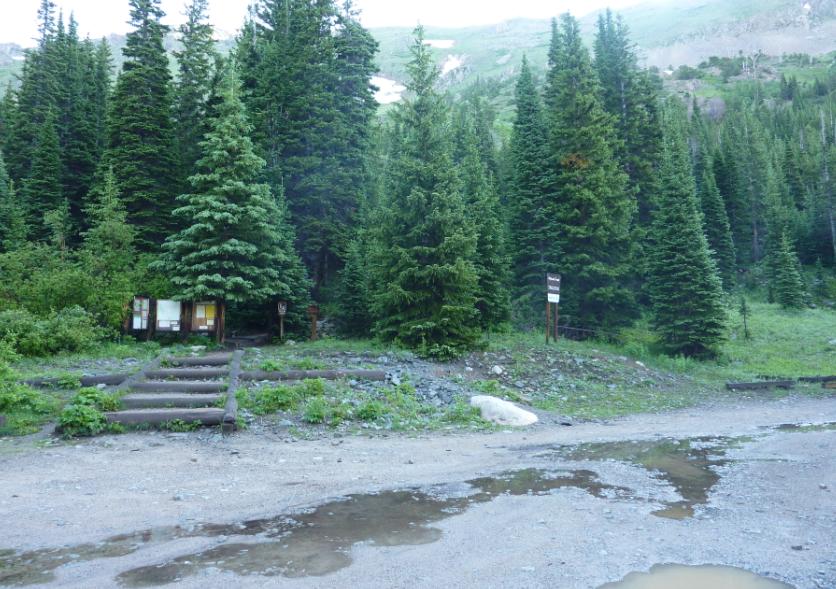
Fourth of July trailhead
Skiing season is long over. The big running race that I’ve been training for is over. Memorial Day is over. By all rights, it’s time for summer activities, namely hiking camping and backpacking. Early June is a weird time up in the Rocky Mountains. It’s the in between season.
Temperatures today reached the mid 90s down on the plains, and close to 80 up here in Nederland. It feels like summer. Wildflowers are popping up all over the place — flashes of yellow, bursts of purple. A pale, yellow film covers my car each morning — another sign of summer, as pine pollen is blown from the lodgepole pines that line the roads of our neighborhood, wreaking havoc on my sinuses and nose. The lakes and reservoirs are filling up to the brim, the creeks are rushing with water, as snow melt reaches its peak.
Even the dogs seem to know that summer is around the corner, as tufts of black and white fur cover our rugs and floors inside our mountain log home. As we do our evening walk, the pant from heat — who wouldn’t wearing a thick black fur coat?
And yet in terms of outdoor recreation, we’re just not quite there yet. As I gaze upon the 13,000-foot mountains of the Indian Peaks, they are still amply covered in snow. Those attempting to scale the high peaks this time of year better come prepared with more than a day pack and hiking boots. If you want to reach the summit of Longs Peak right now, you better be well versed in using crampons and ice axes, as wintry conditions continue to hang on.
It can be frustrating for someone like me who thrives on spending time in the great outdoors. I hate hot weather, and living up in the mountains has spoiled me. Anything above 79 degrees seems downright searing. Last year, we only had two days the entire summer that made it above 82 degrees.
So the thought of hiking and biking down in nearby Boulder where the trails are snow-free is not appealing during 90 degree plus temperatures. But it’s too early to try and hike in the Indian Peaks or Rocky Mountain National Park, more than a couple of miles out from the trail head. Those who do venture farther need to be well acquainted with maps and route finding when there is no trail to follow or suffer the consequences.
A couple of years ago when I still worked as a ranger at Rocky Mountain National Park, I was hiking out of the immensely popular Bear Lake area on the Lake Haiyaha loop. One of our responsibilities in early summer was filing reports on trail conditions that could be posted through the park’s website. I knew what I was getting into and had brought maps, trekking poles, gaitors as well as ice grippers for my boots. Still, I found it challenging climbing over 3-4 foot drifts and staying on route.
I soon ran into a group of four teenage guys from Alabama who appeared lost. They asked me for help in finding their way. They were ill prepared for the trekking through the snow, and I gently suggested a hike that would be more snow-free. They perkily responded they wanted to continue on, “Since we are using this as a warm-up hike to climb Longs Peak tomorrow!” No wonder there are so many rescues of the famous 14,000-foot peak every year….
For me, I know there is only remedy to the “In Between Season.” Prepare myself for 2-3 more weeks of short hikes around Nederland or braving the heat down below in Boulder. There’s a reason why one of the most popular trail heads and corresponding road in the Indian Peaks is called Fourth of July trail head (and road) — that’s when it can finally be driven to and hiked out of. Counting the days…

